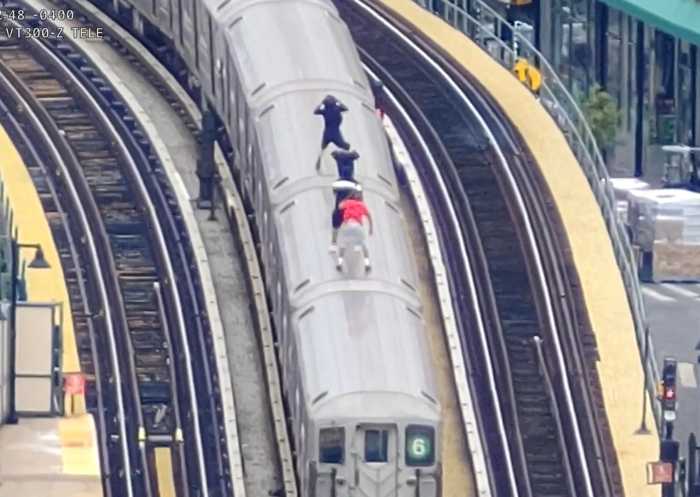
Victor Wald, 49, and Harry Ramos, 41, met for the first time on Sept. 11, 2001. They encountered each other in a stairwell of the South Tower, where they worked.
Ramos may have sacrificed his own life in assisting the fatigued Wald down the steps following the attacks. Witnesses heard Ramos telling Wald, “I’m not going to leave you.”
Neither man made it out of the building alive.
Wald’s and Ramos’s names will be inscribed side by side on the National 9/11 Memorial’s north reflecting pool.
The memorial published a digital guide last week to help families like Wald’s and Ramos’, as well as their friends, quickly find their names. The application for the guide, located at www.names.911.memorial.org, broadly arranges the names of the fallen 2,982 individuals by the location of their deaths, be it on an airplane or in one of the Twin Towers. Several sub-groupings consist of siblings and co-workers, while others denote the bonds of strangers, like Wald and Ramos, who shared the final minutes of their lives together.
The inscriptions of the names will appear on the memorial reflecting pools’ eight bronze panels, which will be sprinkled with falling water and backlit in the evenings.
The application, made available in six languages, has a search engine that allows users to look up victims’ names, employers and other affiliations, as well as their birthplaces and residences at the time of death. The profiles include their photographs along with any biographical information that was accessible to the memorial staff.
Letters were mailed to more-than 3,500 victims’ next-of-kin, specifying the location of the names on the panels.
The adjacencies, many of which were requested by family members, are more significant than the alphabetical or random arrangement proposals put forth by the memorial and the families, according to Joe Daniels, president of the National 9/11 Memorial.
“Because it’s not an intuitive arrangement, we wanted to create a very simple system to have people find the names as easily as possible,” said Daniels of the guide. “The fundamental premise is that you enter a name, and it tells you exactly where to go — and, at the same time, it’s an arrangement infused with all this additional meaning.”
New York-based media design firm Local Projects developed an algorithm to accommodate the more-than 1,200 requested adjacencies the museum compiled since 2009, and was in charge of selecting a uniform typeface for the names.
The project was “an incredible experience” and took about four months to complete, according to Jake Barton, principal and founder of Local Projects, who was also awarded the job of creating the digital presentations to be on display at the National 9/11 Museum once it opens next year.
“[The memorial] realized they needed some form of computational power to be able to actually make the arrangements and keep within the aesthetic design of the panels themselves,” said Barton.
Grouping the names alphabetically, Barton said, would have been “pretty arbitrary.”
“You have all these people who don’t have any relationship listed one next to the other,” said Barton. “In this case, everyone’s grouped according to where they perished, and then inside of that, they’re grouped by all these requests.” Luckily, he noted, the requested name couplings did not conflict with one another, for the most part.
The fruit of their labor, Barton said, wasn’t tangible until last week, when the guide was finally released to the public. “We’ve really seen the project unfold from a point of aspiration at the beginnings, now into a moment where you start to see all the various parties coming together.”
Mixed feelings
Many family members expressed their approval of the method the memorial used to situate the names.
“The fact that they’re listed with this concept of meaningful adjacencies really pulls on my heartstrings,” said Anthoula Katsimatides, whose deceased brother, John Katsimatides, was one of 658 employees of Cantor Fitzgerald that perished on 9/11. “It bonds people symbolically, even after their death.”
At Anthoula’s request, John’s name was placed next to three of his co-worker friends.
The release of the guide months in advance of the memorial’s opening, Katsimatides added, “really prepares [families] for what they are going to deal with.”
Others, however, are dissatisfied with the system, including Rosaleen Tallon, sister of the late firefighter, Sean Patrick Tallon. “We wanted them listed with their rank, and they’re not,” she said. “It would have meant an awful lot. It’s still very, very upsetting to the fire service.”
Daniels said that including the victims’ positions in the guide would have unnecessarily distinguished them by job title.
“It goes back to the beginning [idea] of not creating a hierarchy of those who died on that day,” said Daniels.
Hard copies of the guide will not be distributed for efficiency purposes, though on-site kiosks will make the application available to memorial visitors starting in September. The guide will also be accessible via Smartphones and tablets, such as the iPad.
Article BY Aline Reynolds

































